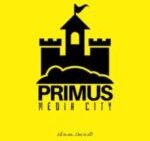By: Israel Babalola
Cartoons over the years have become very prominent features of newspapers and magazines that make many print media registered themselves in the heart of the society. There is the tendency to see cartoons as very trivial issues meant to create fun and laughter for readers only, yet they are veritable means of exposing social ills, as well convey message of deep meaning and magnitude that might not be expressed on white and black.
Newspaper cartoon, termed “Editorial Cartoon” is the study of drawing or series of art drawings that tell stories about human actions or inaction in the society. Editorial cartoons are graphic work illustrations in both lines and shapes that comment on political events and policy, and serve to define the significant topics of political discourse and record them, thus creating a “snapshot” of the political climate in a given period or area.
Cartooning has been one of the most significant tools in projecting and promoting cultural heritage in the society. Newspaper cartoons throughout Nigerian history reveal that they have served as unique windows useful in understanding local and national politics.
More so, using imagery, metaphor, symbolism and other rhetorical devices, the cartoonist defines both human and political situations and attempts to interpret them visually in a way that is both amusing and thought provoking.
The high humorous sense of event recording or keeping is another vital role cartoon performs in Print Media Communication. It is very unsual to have a misinterpretation or misconception of documentary been passed to the genertion to come in the society through cartoonist.
When talking of Nigerian’ agitation for Nationalism and democracy in time past, the immense contribution of cartoon on Newspapers and other print media cannot be undermined. Cartoonist were proactive to interpret with cartoon the situation around Nigeria of then and today.

